F2 Goldendoodle: Characteristics, Temperament, and Care Tips
F1 Goldendoodles, the first-generation crossbreeds between purebred Golden Retrievers and Poodles, are most likely to exhibit hybrid vigor because they have the most genetic diversity. They inherit 50% of their genes from each parent, which are two different breeds.
F2 Goldendoodles, on the other hand, are bred from two F1 Goldendoodles. This means they still have a mix of Golden Retriever and Poodle genes, but the distribution might not be as even. Some F2 Goldendoodles might inherit more Golden Retriever traits, while others might inherit more Poodle traits.

F2 Goldendoodle: Characteristics, Temperament, and Care Tips
F2 Goldendoodles characteristics can be quite diverse, with a wide range of coat types, colors, and sizes due to the complex mix of genes they inherit. You might find F2 Goldendoodles with curly, wavy, or straight coats in colors from cream to black. Their size can also vary, depending on the size of the Poodle in their lineage. When it comes to temperament, F2 Goldendoodles often inherit the friendly, intelligent, and affectionate nature of their parent breeds.
Want a more predictable outcome than an F2 doodle? Look into F1B, arguably the most predictable of the doodle mixes. This first-generation Goldendoodle is much more predictable.
Want a smaller Doodle? The mini F1b is right up your alley.
Genetic Background
The Goldendoodle is a hybrid dog breed that is a cross between a Golden Retriever and a Poodle. The first generation of Goldendoodles, known as F1 crosses, are 50% Poodle and 50% Golden Retriever.
F2 Goldendoodles are the result of breeding two F1 Goldendoodles together. They are 50% Poodle and 50% Golden Retriever, just like F1 Goldendoodles. However, F2 Goldendoodles are not always low-shedding or hypoallergenic, as their genetic makeup can vary depending on which genes they inherit from their parents. They’re less likely to get enough genes from the poodle parents to keep the curly coat. They may also lack the hybrid vigor of the F1 generation. As generations of Goldendoodle are bred, they become more genetically diverse and therefore less predictable.
The F2 generation is just one of several possible Goldendoodle generations. Other generations include F1B, F2B, and F3. F1B Goldendoodles are the result of breeding an F1 Goldendoodle with a Poodle, while F2B Goldendoodles are the result of breeding an F1B Goldendoodle with another F1B Goldendoodle. F3 Goldendoodles are the result of breeding an F2 Goldendoodle with another F2 Goldendoodle.

The genetic background of Goldendoodles is complex, and it can be challenging to predict the traits that a Goldendoodle will inherit from its parents. However, breeders can use lineages and backcrossing to increase the likelihood that their Goldendoodles will have certain desirable traits.
| Generation | Breed Makeup |
|---|---|
| F1 | 50% Poodle, 50% Golden Retriever |
| F1B | 75% Poodle, 25% Golden Retriever |
| F2 | 50% Poodle, 50% Golden Retriever |
| F2B | 62.5% Poodle, 37.5% Golden Retriever |
| F3 | 50% Poodle, 50% Golden Retriever |
Physical Traits
F2 Goldendoodles are second-generation crossbreeds, meaning both their parents are Goldendoodles. This mix of genetics can result in a wide range of physical traits, including color, coat type, shedding, and size.
Color: F2 Goldendoodles can come in a variety of colors, including cream, apricot, red, black, and sometimes even multi-colored like parti or phantom. The color is determined by the coat colors of their parents and the complex interplay of genes they inherit.
Coat Type: The coat of an F2 Goldendoodle can vary significantly. Some may have the curly coat of a Poodle, while others may have the wavy or straight coat of a Golden Retriever. Many F2 Goldendoodles have a coat that falls somewhere in between – not as curly as a Poodle but not as straight as a Golden Retriever. This is often referred to as a “fleece” or “wavy” coat.

Shedding: Goldendoodles are often promoted as being hypoallergenic because Poodles are known for their low-shedding coats. However, because Goldendoodles are a mix of Poodle and Golden Retriever (a breed that sheds), the amount an F2 Goldendoodle sheds can vary. Some may inherit more of the Poodle’s low-shedding coat, while others may shed more like a Golden Retriever.
Size: The size of an F2 Goldendoodle can also vary, depending on the sizes of the parent dogs. Goldendoodles can be bred from standard, miniature, or even toy Poodles, resulting in a range of potential sizes. Standard F2 Goldendoodles typically range from about 50 pounds to over 100 pounds. Mini Goldendoodles, bred from smaller Poodles, can be significantly smaller.
In conclusion, the physical traits of F2 Goldendoodles can be quite diverse due to the complex mix of genetics they inherit from their parents. This diversity is part of what makes each F2 Goldendoodle unique. Isn’t it amazing how much variety can exist within a single breed?
Temperament and Personality
When it comes to temperament and personality, F2 Goldendoodles are known for being intelligent, affectionate, active, gentle, and energetic. They are a great choice for families with children and other pets due to their friendly and sociable nature. However, there is a lot of variability in F2 Goldendoodle personality.
The study “Expression of Behavioural Traits in Goldendoodles and Labradoodles” provides insights into the behavioral traits of these crossbreeds. The study found that F1 Goldendoodles (first-generation crossbreeds) varied from their purebred parents in several areas, including dog rivalry, dog-directed aggression, dog-directed fear, and stranger-directed fear.
What does this mean for F2 Goldendoodles? F2 Goldendoodles are second-generation crossbreeds, meaning both their parents are Goldendoodles. While the study doesn’t directly address F2 Goldendoodles, it’s reasonable to infer that these dogs may also exhibit a mix of traits from their Goldendoodle parents and, by extension, their grandparent breeds (Golden Retrievers and Poodles).
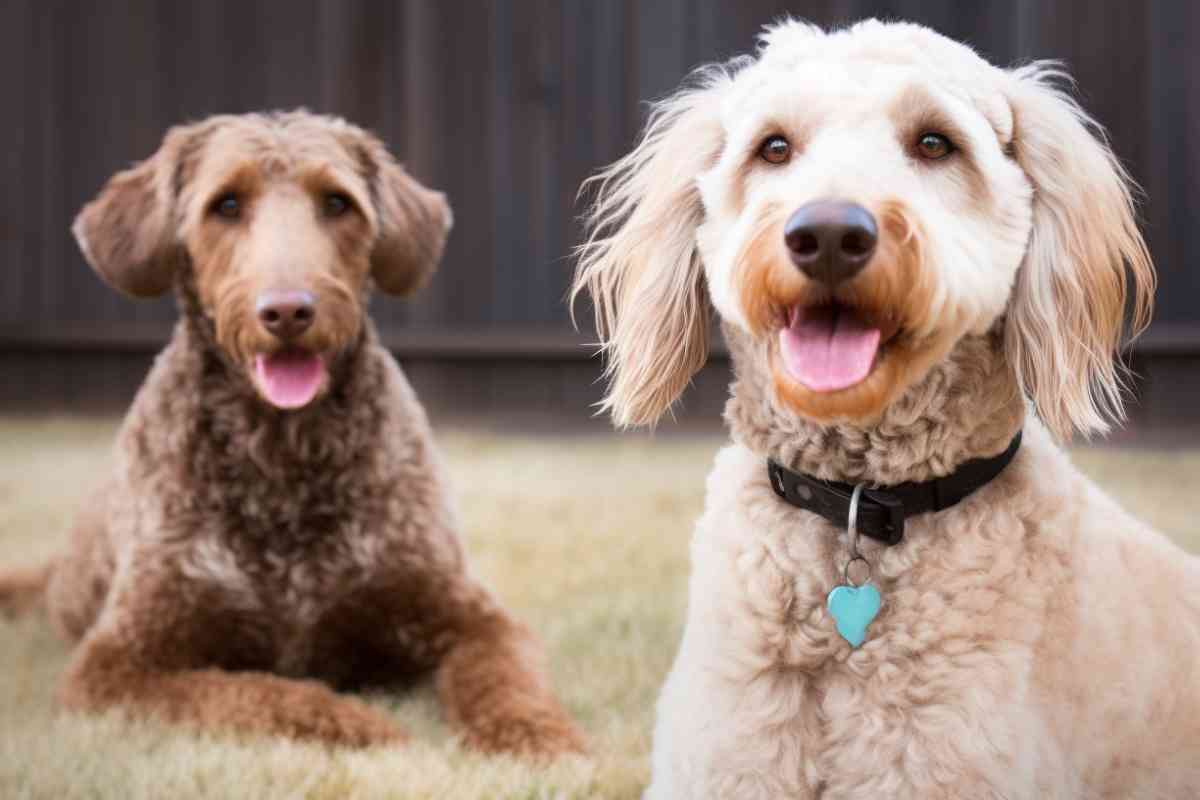
According to most owners of F2 Goldendoodles, these dogs are highly intelligent and easy to train. They are quick learners and respond well to positive reinforcement training methods. They are also known for being affectionate and loving towards their owners, making them great family pets.
In terms of behavior, F2 Goldendoodles are known for being active and energetic. They love to play and require daily exercise to keep them healthy and happy. However, they are also gentle and patient, making them a great choice for families with children.
Overall, F2 Goldendoodles have a great temperament and personality that make them a great choice for families looking for a friendly and sociable pet. See the table below for a quick summary of their key traits.
| Trait | Description |
|---|---|
| Intelligent | Quick learners, easy to train |
| Affectionate | Loving and loyal towards their owners |
| Active | Require daily exercise to stay healthy and happy |
| Gentle | Patient and kind, great with children |
| Energetic | Love to play and have fun |
Health and Potential Issues
When it comes to F2 Goldendoodles, it’s important to be aware of potential health issues that may arise. While Goldendoodles are generally considered to be healthy dogs, they can still be prone to certain health problems, especially if they are not bred responsibly.
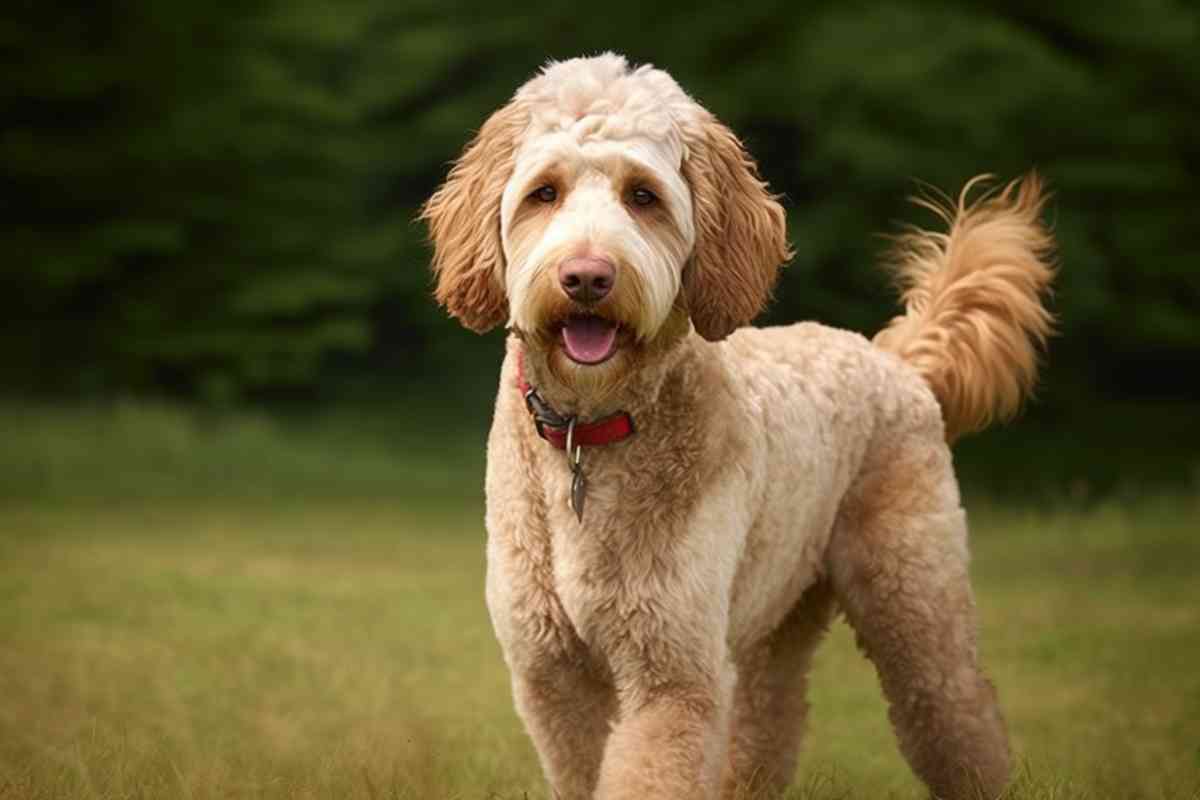
Hip Dysplasia
Hip dysplasia is a common health issue that affects many dog breeds, including Goldendoodles. This condition occurs when the hip joint doesn’t develop properly, causing the bones to rub against each other and leading to pain, stiffness, and arthritis.
According to a study on designer crossbreed dogs, including Goldendoodles, “reliable prevalence data on the health problems facing designer crosses themselves (F2 and subsequent crosses) are lacking.” However, it’s important to note that hip dysplasia is a common issue in both Golden Retrievers and Standard Poodles, the parent breeds of the Goldendoodle.
Other Potential Health Issues
In addition to hip dysplasia, F2 Goldendoodles may be prone to other potential health issues such as:
- Eye problems, including cataracts and progressive retinal atrophy (PRA)
- Skin allergies and dermatitis
- Ear infections
- Digestive issues, such as bloating and inflammatory bowel disease (IBD)
It’s important to note that not all Goldendoodles will develop these health issues, and responsible breeding practices can help reduce the risk of genetic health problems.
Allergies and Shedding
When it comes to allergies and shedding, F2 Goldendoodles can be a good option for those who suffer from allergies or prefer dogs that don’t shed much. However, it’s important to understand that no dog is completely hypoallergenic or non-shedding.
For those with allergies, it’s important to spend time with a F2 Goldendoodle before bringing one home to ensure that you don’t have an allergic reaction. While F2 Goldendoodles are less likely to cause allergies, it’s still possible to have an allergic reaction to them.

In summary, F2 Goldendoodles are a good option for those with allergies or who prefer dogs that don’t shed much. While they are not completely hypoallergenic or non-shedding, they are a good choice for those who want a low-shedding dog. Regular grooming and brushing can help reduce shedding, and spending time with a F2 Goldendoodle before bringing one home can help ensure that you don’t have an allergic reaction.
Grooming F2 Goldendoodle
Brushing your F2 Goldendoodle’s coat is essential to prevent matting, tangling, and shedding. The frequency of brushing depends on the length and texture of your dog’s coat. For example, if your F2 Goldendoodle has a curly coat, you should brush it more frequently than if it has a wavy or straight coat.
It is recommended to brush your F2 Goldendoodle’s coat at least once a week, using a slicker brush or a comb. You can also use a de-shedding tool to remove loose hair and reduce shedding. Regular brushing not only keeps your dog’s coat healthy and shiny but also helps distribute natural oils, which keeps the skin moisturized and prevents dryness and irritation.
Bathing your dog should be done once every 2-3 months, or as needed. Use a mild shampoo and conditioner formulated for dogs to avoid skin irritation and dryness.
Trimming your F2 Goldendoodle’s coat is necessary to keep it at a manageable length and prevent matting. You can do this yourself using scissors or a clipper, or you can take your dog to a professional groomer.
Nail clipping is also an essential aspect of grooming. Overgrown nails can cause discomfort and even pain to your F2 Goldendoodle, so it is recommended to clip them every 2-3 weeks. Use a sharp nail clipper designed for dogs and be careful not to cut the quick, which is the blood vessel inside the nail.

Training and Exercise
Training and exercise are essential for the well-being of F2 Goldendoodles. These dogs are known for their intelligence, loyalty, and eagerness to please, making them relatively easy to train. However, they can also be stubborn at times, so consistent training is necessary.
When it comes to training F2 Goldendoodles, positive reinforcement techniques work best. These dogs respond well to rewards such as treats, praise, and playtime. Punishment or negative reinforcement can lead to anxiety and stress, which can hinder their ability to learn.
In terms of exercise, F2 Goldendoodles require daily physical activity to stay healthy and happy. They enjoy long walks, runs, and playing fetch. A lack of exercise can lead to boredom, destructive behavior, and obesity.
A table can help illustrate the exercise needs of F2 Goldendoodles:
| Exercise Type | Frequency | Duration |
|---|---|---|
| Walks | Daily | 30 minutes to 1 hour |
| Runs | 2-3 times a week | 20-30 minutes |
| Playtime | Daily | 20-30 minutes |
In addition to regular exercise, F2 Goldendoodles can benefit from agility training. This type of training involves navigating an obstacle course, which can help improve their coordination, balance, and overall fitness. It can also provide mental stimulation and prevent boredom.
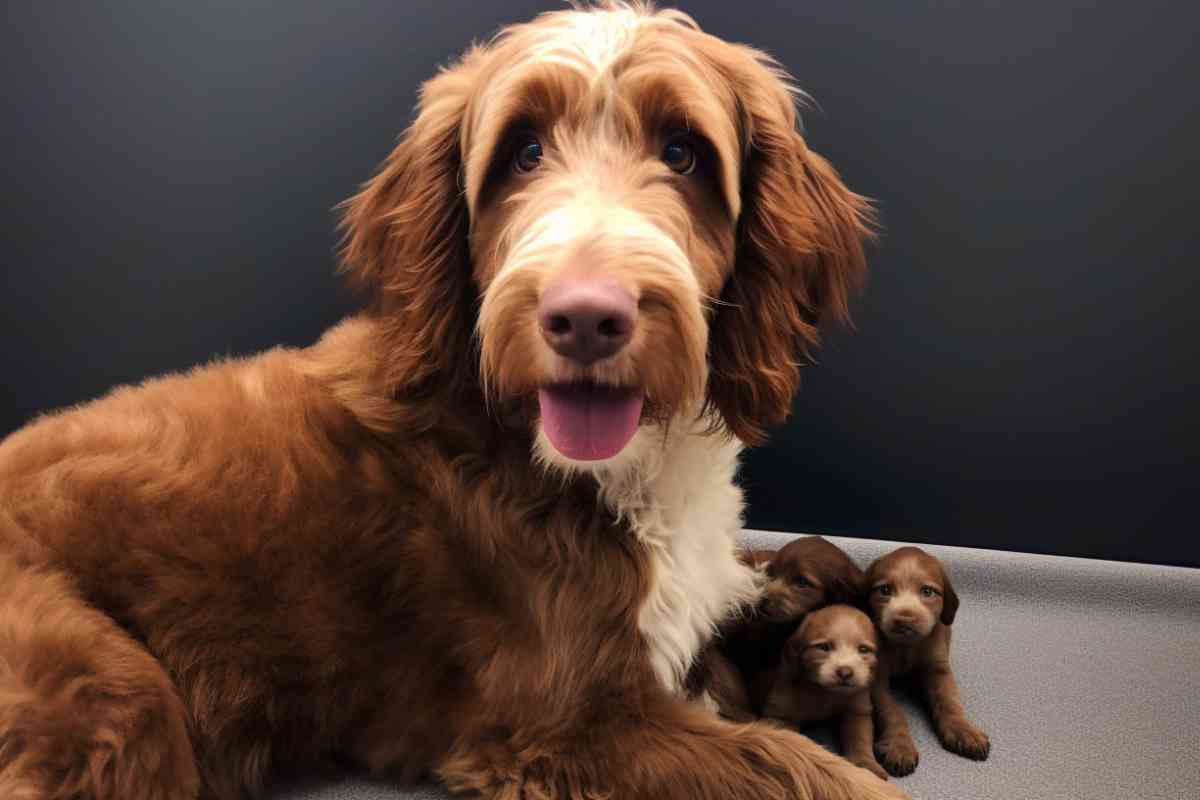
Cost Considerations
When considering getting an F2 Goldendoodle, cost is an important factor to keep in mind. The price of an F2 Goldendoodle can vary depending on several factors including breeder reputation, location, and demand.
On average, F2 Goldendoodles can cost anywhere between $1,500 to $3,500. However, it is important to note that some breeders may charge more for certain coat colors or patterns. It is essential to do your research and find a reputable breeder who provides proper health testing and care for their dogs.
In addition to the initial cost of purchasing an F2 Goldendoodle, there are also ongoing costs to consider. These include food, grooming, veterinary care, and training. It is essential to factor in these costs when deciding if an F2 Goldendoodle is the right fit for your lifestyle and budget.
To give you an idea of the potential costs associated with owning an F2 Goldendoodle, here is a table outlining some of the typical expenses:
| Expense | Cost |
|---|---|
| Food | $50-$100/month |
| Grooming | $50-$100/month |
| Veterinary Care | $500-$1,000/year |
| Training | $100-$300/month |
It is important to note that these costs are estimates and can vary depending on your location and the specific needs of your F2 Goldendoodle. However, it is always better to overestimate the costs to ensure that you can provide your furry friend with the care and attention they deserve.
Overall, while the initial cost of an F2 Goldendoodle may seem high, the ongoing expenses should also be considered when deciding if this breed is right for you. By doing your research and budgeting accordingly, you can ensure that you provide your F2 Goldendoodle with a happy and healthy life.

F1 vs F2 Goldendoodle
F1 Goldendoodles are the first generation crossbreeds between a purebred Golden Retriever and a purebred Poodle. They tend to exhibit a balance of traits from both parent breeds.
Pros of F1 Goldendoodles:
- They are most likely to exhibit hybrid vigor, potentially leading to better health and vitality.
- Their coat is typically a blend of the Poodle’s curls and the Golden Retriever’s straight fur, often resulting in a wavy texture.
- They often have a friendly and outgoing temperament, which is a common trait in both Golden Retrievers and Poodles.
Cons of F1 Goldendoodles:
- Their coat type can be less predictable and may range from straight to curly. This can also affect their shedding, with some F1 Goldendoodles shedding more than others.
- They may be prone to certain health conditions that are common in either Golden Retrievers or Poodles.
F2 Goldendoodles are the offspring of two F1 Goldendoodles. This means they are one step further removed from the purebred parents, which can lead to a wider range of traits.
Pros of F2 Goldendoodles:
- They can have a greater variety of coat types and colors due to the more complex mix of genes.
- If you love surprises, the greater genetic variation can lead to a more unique combination of traits.
Cons of F2 Goldendoodles:
- The traits of F2 Goldendoodles can be less predictable than those of F1 Goldendoodles. This includes their coat type, shedding, size, and temperament.
- They may be less likely to exhibit hybrid vigor compared to F1 Goldendoodles.
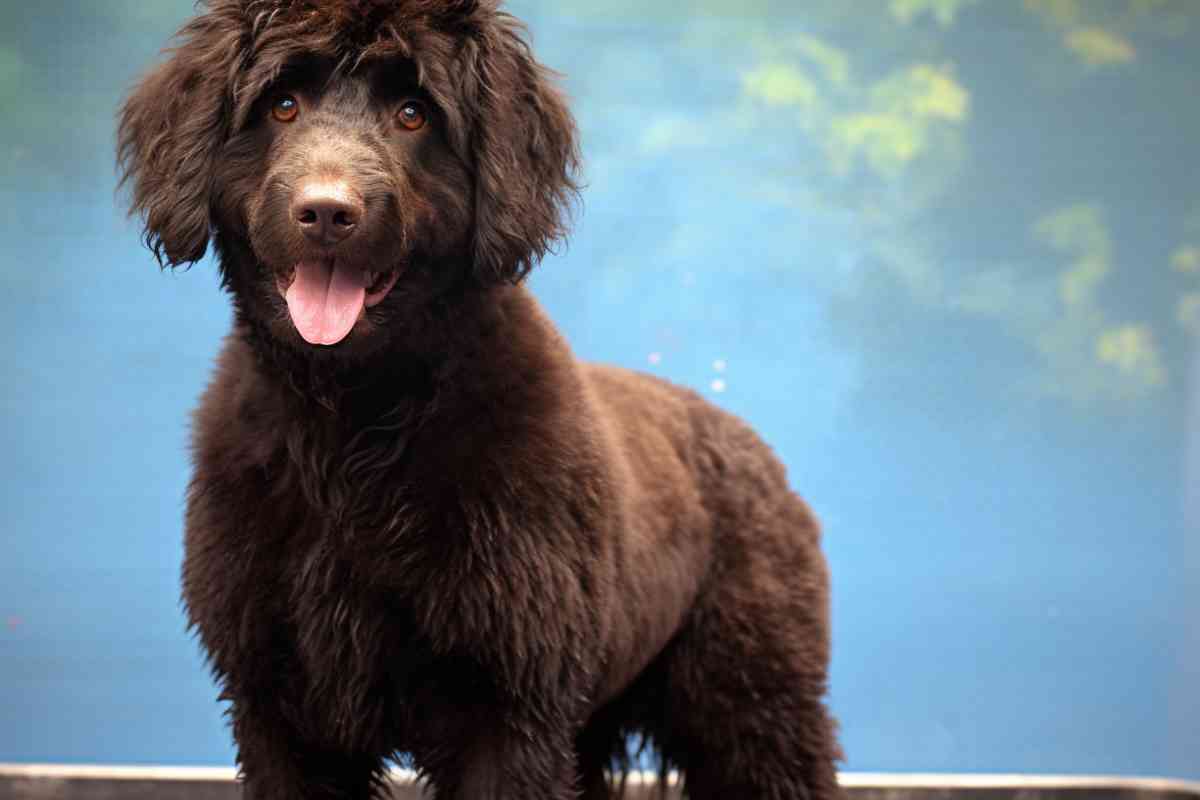
Multigen Goldendoodles
Multigen Goldendoodles are produced by crossing a Goldendoodle with another Goldendoodle past the first couple of generations. Multigen Goldendoodles typically have a wide range of coat types, colors, and personalities because there is so much genetic diversity and any combination of genes could be expressed. They could be almost completely poodle, almost completely retriever, and anything in between.
Why Don’t Many Breeders Breed F2 Goldendoodles?
Breeding F2 Goldendoodles can be less predictable than breeding F1 Goldendoodles, and this is often the reason why some breeders choose not to breed them.
F1 Goldendoodles are a first-generation cross between a purebred Golden Retriever and a purebred Poodle. The traits they inherit from each parent breed are relatively predictable, with the offspring typically exhibiting a balance of characteristics from both.
On the other hand, F2 Goldendoodles are bred from two F1 Goldendoodles. This means the mix of genes they inherit can be more complex and less predictable. For example, their coat type can range from straight to curly, and their size can vary more widely.
In addition, F2 Goldendoodles can inherit a wider range of health conditions from their parent breeds. While all dogs can potentially inherit health conditions from their parents, the risk can increase with each generation of crossbreeding.
For these reasons, some breeders choose to stick with breeding F1 Goldendoodles or even F1B Goldendoodles (an F1 Goldendoodle bred with a purebred Poodle) to maintain more control over the traits of the puppies.
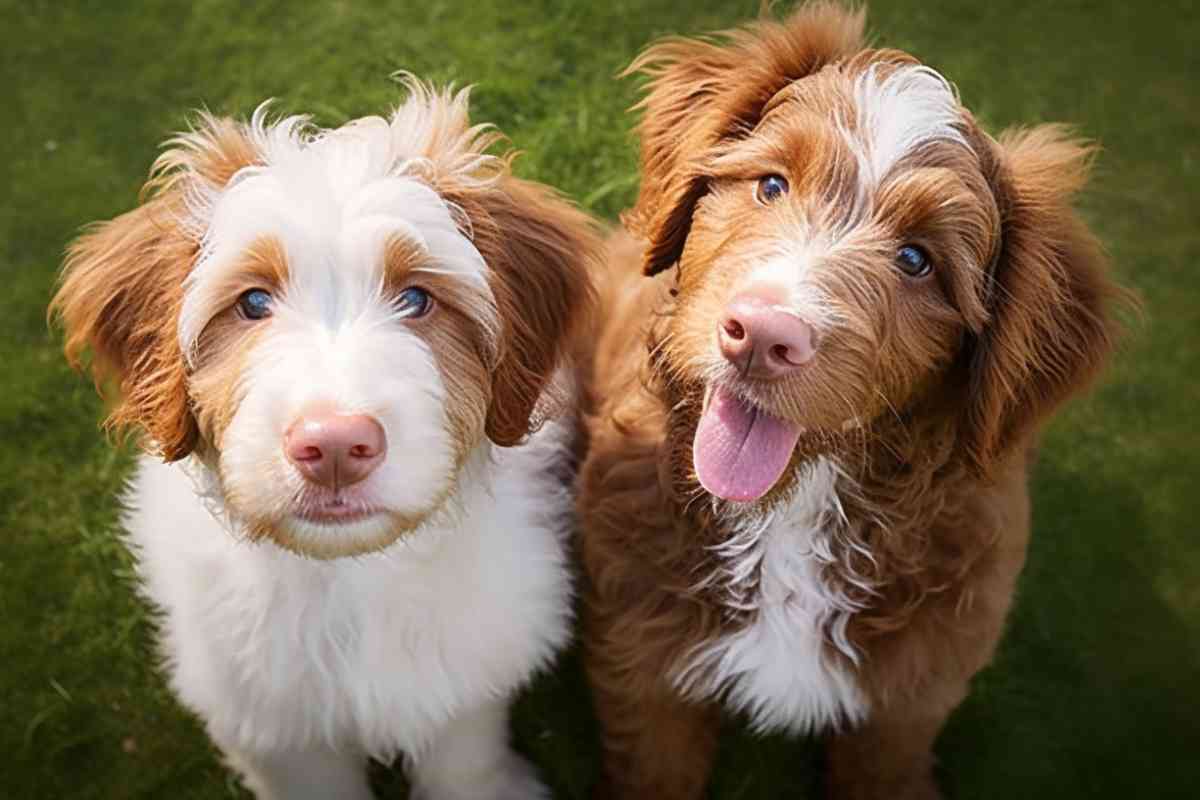
Frequently Asked Questions
What is an F2B Goldendoodle and how is it different from an F2?
An F2B Goldendoodle is a second-generation Goldendoodle bred back to a purebred Poodle. This results in a dog that is 75% Poodle and 25% Golden Retriever. The main difference between an F2 and an F2B is the amount of Golden Retriever in their genetics. F2 Goldendoodles have equal parts Poodle and Golden Retriever, while F2B Goldendoodles have more Poodle genetics.
How much does an F2 Goldendoodle weigh on average?
The weight of an F2 Goldendoodle can vary greatly depending on the size of their parents. On average, an F2 Goldendoodle will weigh between 50 and 80 pounds. However, some F2 Goldendoodles can weigh as little as 30 pounds or as much as 100 pounds.
Are F1 or F2 Goldendoodles better for people with allergies?
Both F1 and F2 Goldendoodles are considered hypoallergenic because of their Poodle genetics. However, F1 Goldendoodles may have more Golden Retriever traits and therefore may produce more dander than F2 Goldendoodles. So, if you have severe allergies, an F2 Goldendoodle may be a better choice.
What are some common health issues in F2 Goldendoodles?
F2 Goldendoodles, like all dogs, can be prone to certain health issues. Some common health issues in F2 Goldendoodles include hip and elbow dysplasia, ear infections, and allergies. It is important to keep up with regular vet check-ups and vaccinations to keep your F2 Goldendoodle healthy.
What is the typical size of an F2 Goldendoodle?
The size of an F2 Goldendoodle can vary depending on the size of their parents. On average, an F2 Goldendoodle will stand between 20 and 24 inches tall at the shoulder. However, some F2 Goldendoodles can be smaller or larger than this range.
Are F2 Goldendoodle puppies easy to train?
F2 Goldendoodles are intelligent and eager to please, which can make them relatively easy to train. However, like all dogs, they require consistent training and socialization to become well-behaved adults. It is important to start training and socializing your F2 Goldendoodle puppy from a young age to ensure their success.
| FAQ | Answer |
|---|---|
| What is an F2B Goldendoodle and how is it different from an F2? | An F2B Goldendoodle is a second-generation Goldendoodle bred back to a purebred Poodle. F2 Goldendoodles have equal parts Poodle and Golden Retriever, while F2B Goldendoodles have more Poodle genetics. |
| How much does an F2 Goldendoodle weigh on average? | On average, an F2 Goldendoodle will weigh between 50 and 80 pounds. However, some F2 Goldendoodles can weigh as little as 30 pounds or as much as 100 pounds. |
| Are F1 or F2 Goldendoodles better for people with allergies? | Both F1 and F2 Goldendoodles are considered hypoallergenic because of their Poodle genetics. However, F1 Goldendoodles may have more Golden Retriever traits and therefore may produce more dander than F2 Goldendoodles. |
| What are some common health issues in F2 Goldendoodles? | Some common health issues in F2 Goldendoodles include hip and elbow dysplasia, ear infections, and allergies. |
| What is the typical size of an F2 Goldendoodle? | On average, an F2 Goldendoodle will stand between 20 and 24 inches tall at the shoulder. |
| Are F2 Goldendoodle puppies easy to train? | F2 Goldendoodles are intelligent and eager to please, which can make them relatively easy to train. However, they require consistent training and socialization to become well-behaved adults. |